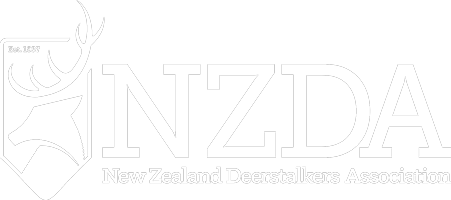HBRC Project Agreement on Deer Carcass Breakdown Monitoring
Project agreement
Date: 29th October 2010
Title: Deer carcass breakdown monitoring
It is agreed as follow
- Objective of proposed research
To provide a quick assessment of the breakdown rate of deer carcasses compared to possum carcasses. If possible, the research is to include monitoring of 1080 levels within the carcass. The quick assessment will assist the AHB in determining if further research is required.
-
Methodology
The project will be established through the monitoring of caged deer and possum carcasses. The AHB requests a minimum of two sites to be selected. The sites selected are to reflect the anticipated quickest and slowest rates of decay possible within the operation area selected. The appropriate land owner is to be made aware of the monitoring stations and the purpose of the monitoring. The deer carcasses are to be ones suspected of being poisoned by 1080 if these are available. If none are available, then a non-poisoned carcass is to be used for this initial monitoring project.When a deer carcass is found at a suitable location, a possum carcass should be placed between 3-10 meters away. The placement of the possum carcass should as much as practical replicate the conditions the deer carcass lies in (considering light / shade, general moisture, run off from rain and typography). The two carcasses should be located to avoid material from one carcass flowing to the other.
The monitoring is to be by both visual decay monitoring (with photographic evidence) and if a 1080 poisoned carcass is available, also residue testing for 1080. Monitoring and residue sampling is expected to take place at the following interverals:
- 10 days after the toxic aerial application
- 20 days after
- 30 days after
- 40 days after
- 2 months after
- Monthly until completed
Samples are expected to be taken from the muscle tissue, bone, skin and gut cont on one of the carcasses and the muscle and skin from the second carcass. All samples are to be tested for 1080 residue. Samples are to be taken by a method as advised by Landcare Research, with care taken to not unduly increase the rate of decay by opening the carcass during sample collection.
Sample Procedue
Sample collection will be carried out in accordance with the following Landcare document – Protocol for Tissue Sampling and Testing for Vertebrate Pesticides in Animals
- Timeframe
Commencing as soon as possible and ending once carcass breakdown is complete to “skin and bone”.
-
Consultation / collaboration
NZDA to be included at any stage possible, including having observers attend any sample taking of the carcass or visits to the monitoring site.
- Justification for research
The NZDA raised concerns about the risk of deer carcass following an aerial 1080 operation to non-target species during the consultation stage of the “Industry Guidelines for Aerial 1080 Application”. The AHB recognised that traditional post operation monitoring for when areas are “safe” are partially based on possum carcass monitoring. Following discussion within the AHB, the AHB accepted that the decay rates of a deer carcass should be investigated in comparison to the traditional possum carcass monitoring currently being conducted.
- Prospects of project achieving results
There are no foreseeable impediments to the achievement of this research.
-
Funding
The AHB shall pay the Hawkes Bay Regional Council as part of operational costs attached to an existing operation for this research. Hawkes Bay Regional Council will alert the AHB to any costs above $5,000 total. It is expected that costs will include some cages for the carcasses, travel costs and testing for 1080 residue. The AHB does not expect to incur any costs from NZDA.
- Assets
No assets are expected to be purchased (unless HBRC consider a cage for a deer carcass as an asset)
- Reporting
E-mail updates are to be sent to the AHB when monitoring commences and monthly until finished.
HBRC is to produce a brief summary report at the conclusion of the project to the AHB. The AHB will distribute any reports to other interested parties such as the NZDA.
